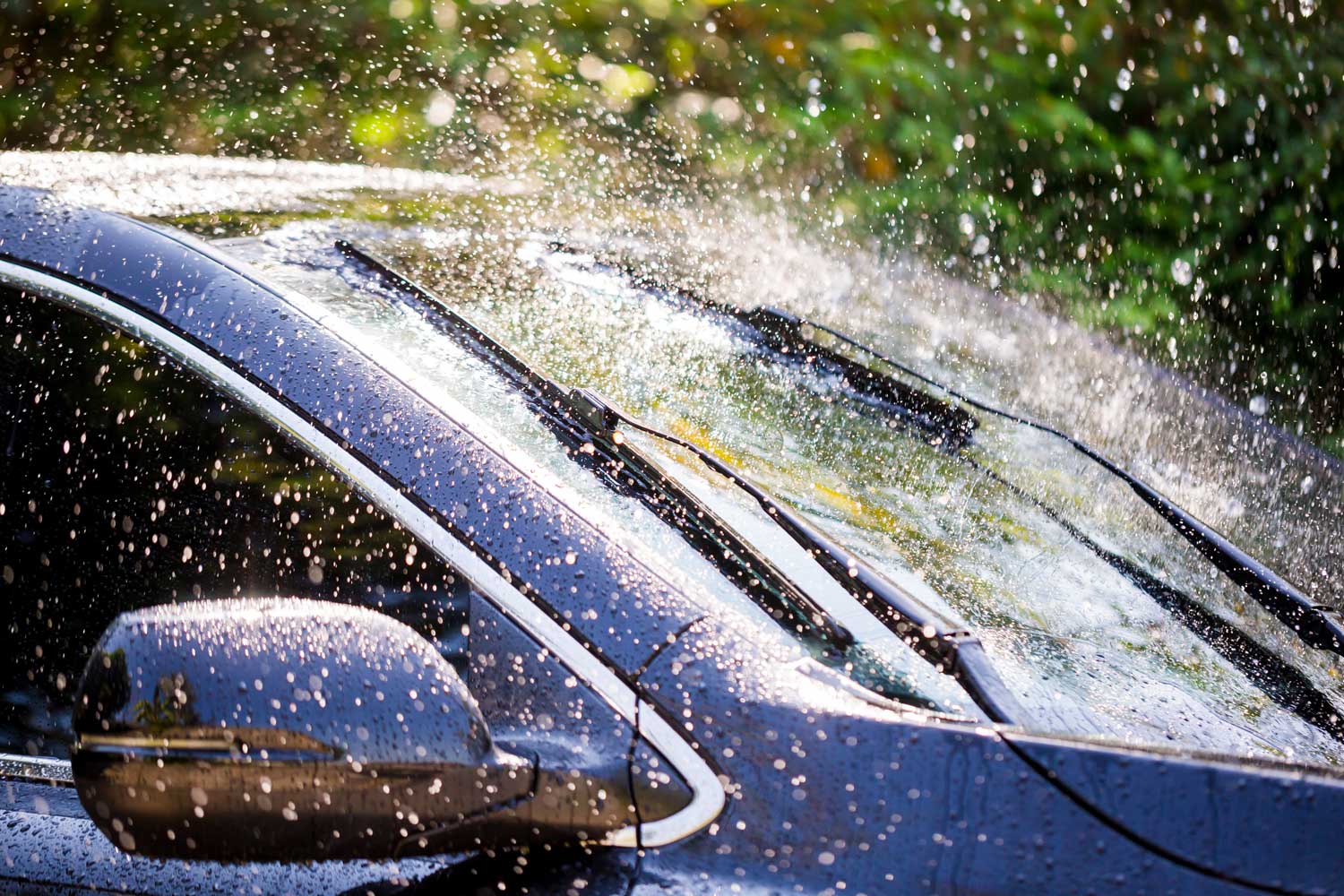How to Pick the Best Windshield Wipers
It's probably easier than you think.
 Shutterstock
Shutterstock
Outward vision is not something you want to tamper with in your car. If your wipers are squeaking, skipping, or leaving trails of water behind with every swipe, it's likely time to change them. Here are a few key details to help you select a new set of blades.
Determining the Correct Size of the Windshield Wiper You Need
As for any vehicle specs, the first place to look is in the owner's manual. There should be a wiper-blade section that lists the size you need. Keep in mind that many vehicles require different size blades for the driver's and passenger's sides, and if your model has a liftgate, don't forget about the rear wiper.
Alternatively, assuming you drive a mass-produced vehicle, there's a good chance you'll be able to look up your car's blade specs in the windshield-wiper aisle of your local auto parts store. Your other options are to call the dealership, look online, or simply measure how long each blade is in inches.
In addition to different sizes, there are also different wiper-arm styles. Fortunately, aftermarket blades usually include adapters so they'll work with most vehicles, but if you're worried about it, go with the original part. It's best to replace both front wipers at the same time, as they typically wear at the same rate.
Choosing the Ideal Wiper Blade Style for Your Needs
Unless your vehicle requires a certain type of blade, you have a few options: conventional, beam, or hybrid. Here's a rundown of how they differ.
Conventional
The conventional wiper consists of a spring-tensioned frame that accepts a metal-backed rubber or silicone strip through a channel of blade claws. Levers push down on these contact points, ensuring the blade presses against the windshield in about six to eight places. Conventional wipers are usually the least expensive option, but due to the gaps between the frame and the wiping element, snow and ice often collect in this type of blade, and wind can lift it off the glass.
Beam
Also called bracketless blades, beam-style wipers integrate the spring inside the rubber, providing even tension across the blade for superior contact as well as a sleek appearance. The curved, aerodynamic design (often with a built-in spoiler) also helps the blade remain firmly on the windshield during high winds. And while they tend to cost more than conventional blades, they last longer and don't freeze up as easily — a boon of not having an external frame.
Hybrid
A hybrid blade has a conventional metal framework, but it's covered by a plastic shell to both protect the hinges from icy buildup and give the wiper a low-profile look. It has some curve to it, too, so as to hug the windshield, and it generally costs somewhere in between a conventional wiper and beam blade.
Picking the Best Wiper Blade Material for Your Use Case
Trying to decide between rubber and silicone blades? Where you live may be an important factor. People who reside in rainy Seattle may wish to pick a wiper with a hydrophobic (water-repelling) coating that transfers onto the windshield to improve visibility during storms. And anyone in the snow belt should check out specialized winter blades, perhaps coated with Teflon or graphite to glide better across the glass. But first, you need to pick between two materials: rubber and silicone.
Rubber
Generally the most cost-effective choice, rubber blades are still the industry standard and perform well in mild to moderate weather.
Silicone
One of the biggest advantages of silicone is its toughness. It'll stay pliable and in contact with the windshield in extreme cold. And for those who live in arid, sunny climates, it won't dry out or degrade as easily as rubber. The trade-off is a typically higher cost.
Written by humans.
Edited by humans.
 Matt Fink
Matt FinkMatt Fink has run an auto-detailing business for 20 years. After about a decade in, he realized his passion for writing about cars, too. He lives in Ohio and drives his 1971 Mini Cooper whenever he can keep it running.
Related articles
View more related articles